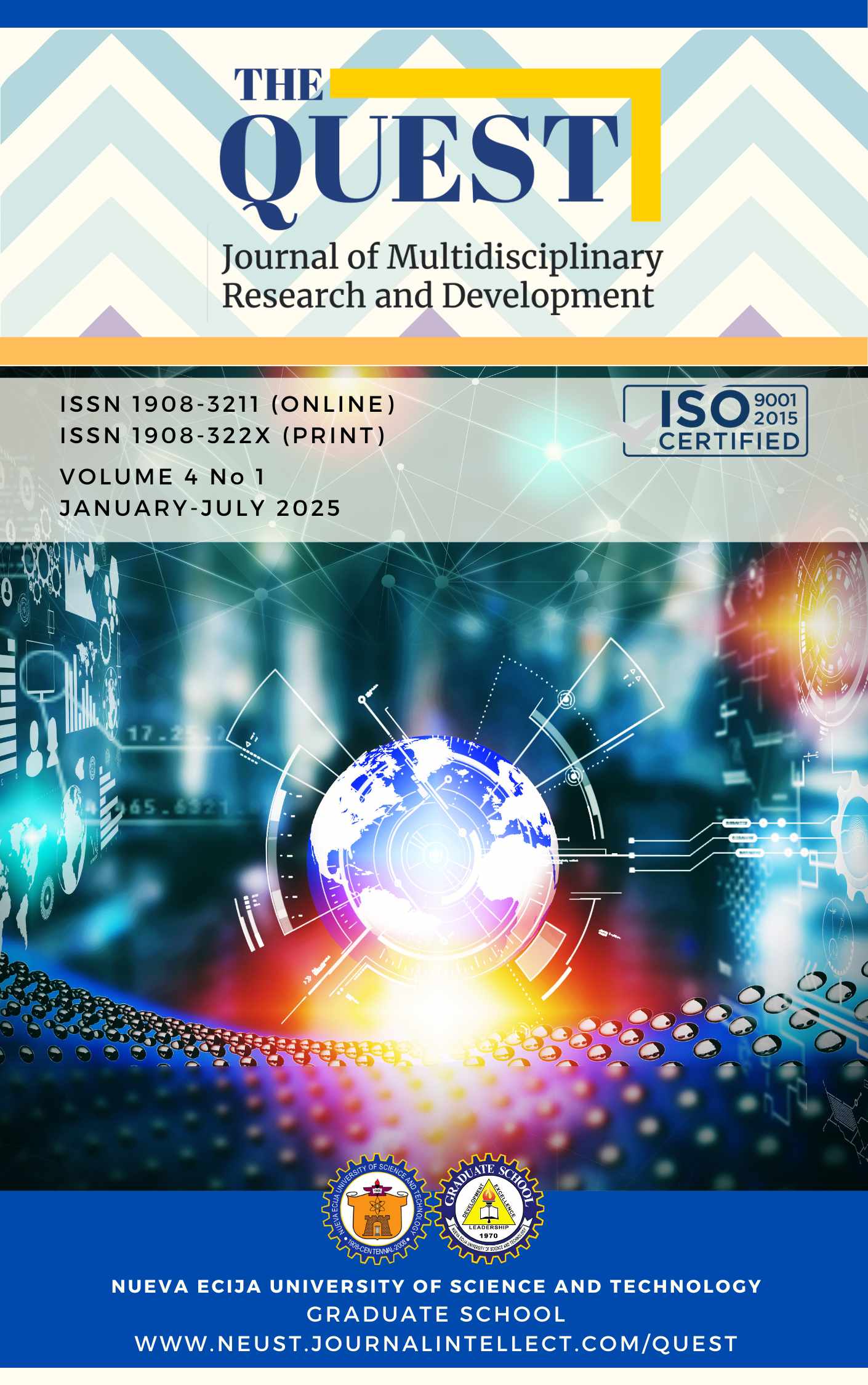Sensory Evaluation of Skinless Longganisa Made from Milkfish (Chanos chanos)

Published 06/30/2025
Keywords
- Sensory Evaluation,
- Food product development,
- Milkfish,
- Skinless longganisa
How to Cite
Copyright (c) 2025 The QUEST: Journal of Multidisciplinary Research and Development

This work is licensed under a Creative Commons Attribution-NonCommercial 4.0 International License.
Abstract
This study aimed to evaluate the acceptability of Milkfish Skinless Longganisa as a new variety of longganisa in terms of appearance, aroma, taste, and texture. The research was conducted with three different treatment combinations: Treatment 1 (100% pork), Treatment 2 (100% milkfish), and Treatment 3 (50% pork and 50% milkfish). A sensory evaluation was performed by 30 respondents, including milkfish vendors, longganisa vendors, and consumers, to assess the acceptability of each treatment. The data were analyzed using descriptive statistics and one-way ANOVA to determine significant differences between treatments. The results showed that both Treatment 1 and Treatment 2 were rated as "extremely acceptable" in all attributes, with Treatment 1 receiving the highest mean score. In contrast, Treatment 3 was rated as "moderately acceptable." The one-way ANOVA revealed significant differences in acceptability levels among the treatments, with Treatment 3 having a significantly lower mean compared to Treatments 1 and 2. The findings suggest that Milkfish Skinless Longganisa has the potential to meet the needs of health-conscious consumers and can serve as a viable alternative to traditional pork-based longganisa. This study contributes to the development of sustainable food options by promoting the use of milkfish as a protein source in the Philippine culinary tradition. Future research is recommended to further explore the nutritional content, shelf life, and overall marketability of milkfish skinless longganisa.
References
- Abad, M. (2021). 5 common species found in Philippine waters. https://www.rappler.com/environment/things-to-know-common-fishes-philippine-waters/
- Bartolome, G. (2024). Design, performance and cost analysis of automated smoking machine for village-level smoked fish production.
- Corrêa, P.F., Da Silva, C.F., Ferreira, J. P., & Guerra, J. M. (2023). Vegetable-based frankfurter sausage production by different emulsion gels and assessment of physical-chemical, microbiological, and nutritional properties. Ciencia UCP.
- Cunanan, M. L. (2023). Revolutionizing the developmental processing of short-bodied mackerel fish (Rastrelliger Brachysoma) through advanced thermal techniques: Unveiling a pathway to unprecedented quality enhancement. The Quest: Journal of Multidisciplinary Research and Development, 2(2).
- Leech, J. (2019). 11 evidence-based health benefits of eating fish. Healthline. https://www.healthline.com/nutrition/11-health-benefits-of-fish
- Lizada, M. (2024). Pantao. The International Journal of the Humanities and Social Sciences. https://pantaojournal.com/wp-content/uploads/2024/06/42-Lizada.
- Malle, S., Tawali, A., & Tahir, M. (2019, March 29). Nutrient composition of milkfish (Chanos chanos, Forskal) from Pangkep, South Sulawesi, Indonesia.
- Manalo, N. Q., & Dorado, R. A. (2017). PCAARRD’s industry strategic science and technology programs. PCAARRD. https://ispweb.pcaarrd.dost.gov.ph/milkfish/
- Navarro, J. (2020). Development and economic viability of milkfish (Chanos-Chanos) longganisa. Psychology and Education. http://www.psychologyandeducation.net/pae/index.php/pae/article/view/2053/1791
- Nelson, A.L., & Marygrace (2009). Chanos chanos. In Cultured aquatic species fact sheets. C.Q. FAO. https://www.fao.org/fishery/docs/CDrom/aquaculture/I1129m/file/en/en_milkfish.htm
